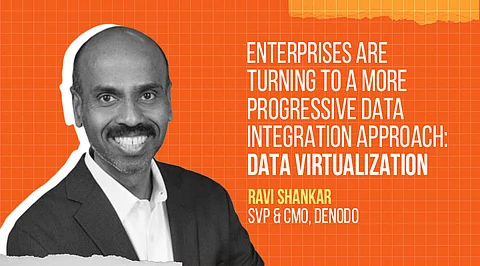

To overcome many issues related to data lakes, enterprises are turning to a more progressive data integration approach: data virtualization.
Physical data lakes promised to take in all of an organization's data, but that process has proven to be difficult and not without challenges. Not all data could be stored in the same data lake, spawning additional, siloed data lakes that were tough to integrate. Context and associations were lost, and governance was lacking.
As a result, organizations started to adopt a logical data lake architecture — a mixed approach centered on a physical data lake but incorporating a virtual data layer to facilitate access to all data assets regardless of location and format. The data is connected, maintaining strong associations and relationships. It also allows you to document and offer that data in the format business users need.
Data volumes have been growing continuously over the years at ever-faster rates. With the proliferation of new digital devices, the continued growth of online commerce, and the emergence of IoT devices, the variety of new data types continues to grow as well.
In addition, because of mobile and edge computing, machine-generated data, and the ability to capture the activity of transactional systems, data is being refreshed at ever-accelerating rates. The volume, variety, and velocity that characterize big data have grown exponentially and show no signs of slowing down.
Hadoop, which can store massive amounts of data while applying enormous processing power, seemed purpose-built for addressing the big data problem. Hadoop is at the center of a rich ecosystem of big data technologies primarily used to support advanced analytics initiatives, including predictive analytics, data mining, and machine learning (ML).
Hadoop systems can handle various forms of structured and unstructured data, giving users more flexibility for collecting, processing, and analyzing data than relational databases and data warehouses provide. The larger problem remained, however: it was just too difficult and time-consuming to physically integrate all the sources of data into a Hadoop system.
The original data lakes attempted to solve the challenges of big data by loading all the data into a central repository, thus eliminating data silos. Data was kept in its raw form and was only transformed when needed. New offerings by major cloud vendors are beginning to blend the concepts of SaaS with big data, blurring the lines between HDFS, Amazon S3, and Azure data lake storage. As organizations shift from viewing data as a static resource to a resource in motion, they will seek out cloud-based iterations of the traditional data lake architecture.
Unfortunately, even the most modernized data lake fails to solve the silo issue, and this is due in part to the ease with which data can be added to the lake. In addition, data indiscriminately ingested into a data lake loses its provenance and its unique associations, making it difficult for business users to understand and find the information they need.
Good governance is key to a usable data lake, but the "load first, ask later" strategy that guides many a data lake can easily lead to one that is ungoverned, with multiple, uncontrolled copies of the same data, stale versions, and unused tables. It is best to begin a data lake implementation by first asking what data should go in the lake, for what purpose, and with what granularity. However, often the data lake gets created first, leading to unrealistic expectations for the raw data. Additionally, due to data restrictions and local laws, some data cannot be replicated in the lake and must be left in separate silos.
To overcome these data-silo issues, many enterprises are turning to a more progressive data integration approach: data virtualization (DV). In fact, data virtualization shares many ideas with data lakes. Both architectures begin with the premise of making all data available to end users. In both architectures, the broad access to large data volumes is used to better support BI, analytics, and other evolving trends such as machine learning and AI.
However, the implementation details of these two approaches are radically different. DV eliminates the need to physically replicate data. In this way, data virtualization enables a "logical data lake" architecture, a mixed approach leveraging a physical data lake with a virtual layer on top.
Logical data lakes can be implemented in the cloud or on-premises and do not require the costly, time-consuming replacement of physical hardware. Due to the flexibility of data virtualization, logical data lakes can complement the existing data infrastructure of any organization at any stage in the modernization journey. More importantly, data virtualization overcomes the issues that limit the success of data lakes in enterprise analytics initiatives.
Ravi Shankar SVP & CMO, Denodo
Ravi Shankar is senior vice president and chief marketing officer at Denodo, a provider of data virtualization software. He is responsible for Denodo's global marketing efforts, including product marketing, demand generation, communications, and partner marketing. Ravi brings to his role more than 25 years of marketing leadership from enterprise software leaders such as Oracle and Informatica. Ravi holds an MBA from the Haas School of Business at the University of California, Berkeley.
Join our WhatsApp Channel to get the latest news, exclusives and videos on WhatsApp
_____________
Disclaimer: Analytics Insight does not provide financial advice or guidance. Also note that the cryptocurrencies mentioned/listed on the website could potentially be scams, i.e. designed to induce you to invest financial resources that may be lost forever and not be recoverable once investments are made. You are responsible for conducting your own research (DYOR) before making any investments. Read more here.
